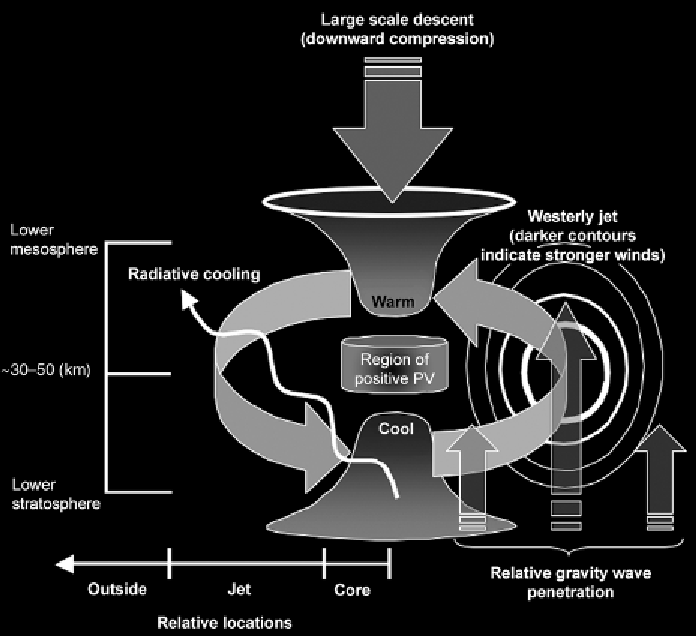Geoscience Reference
In-Depth Information
Figure 4.3.
Schematic of the configuration of the winter stratospheric polar vortex as
diagnosed from a hypothetical positive region of PV (i.e., a potential vorticity anomaly).
The positive columnar region of PV is at the center of the vortex. Note the strong jet
surrounding the region of PV, which weakens as one goes into the quasi-stationary
core or outside the vortex altogether. Transparent, upward arrows conceptualize relative
gravity wave activity (from Gerrard et al.,
2002
, by permission of AGU).
The typical thermal structure of the winter stratosphere features low tempera-
tures in the vortex core of the lower stratosphere that increase outward from the axis
of rotation. Conversely, there are high temperatures in the vortex core of the upper
stratosphere and lower mesosphere that decrease outward. This is illustrated sche-
matically in
Figure 4.3
. This vertical change in the temperature structure is attrib-
uted to warming through large-scale subsidence in the mesosphere and radiative
cooling in the lower stratosphere during the polar night (Gerrard et al.,
2002
). The
stratospheric jet maximum is located at the level of the temperature transition region
in the vertical (10 to 1 hPa). Positive potential vorticity (PV) anomalies are found
in the vortex core at the level of the thermal transition zone, with a cold trough
below and warm dome above. The vortex winds, which are formed between the two
thermal regimes, circulate around the core. Potential vorticity represents the spe-
cific volume (volume per unit mass of air) times the scalar product of the absolute

